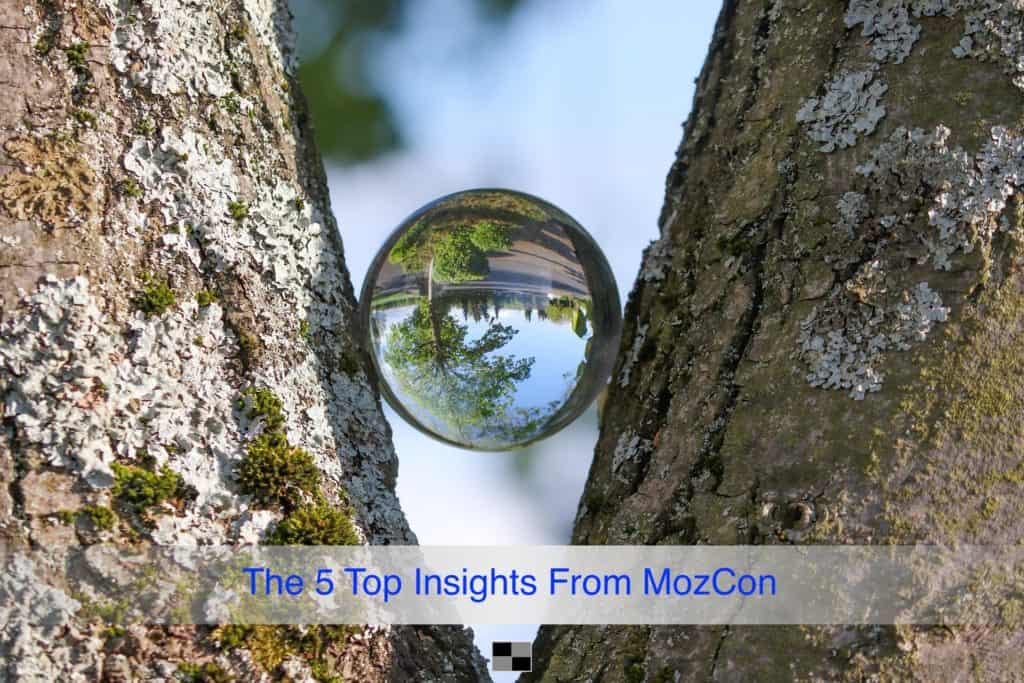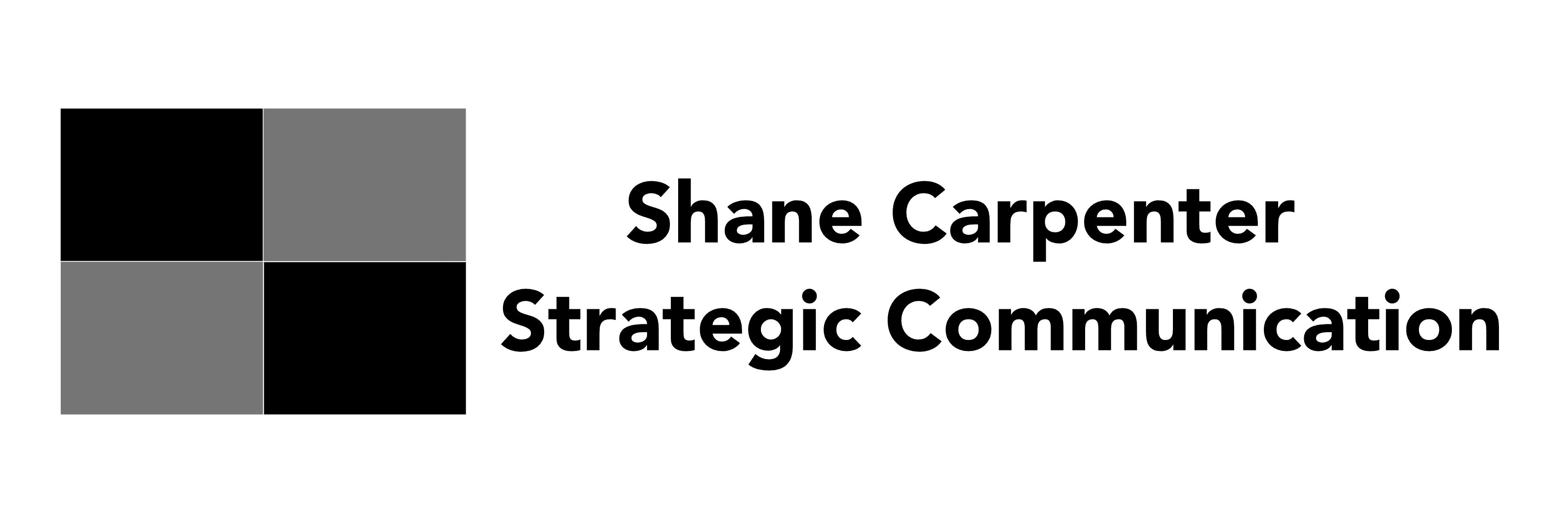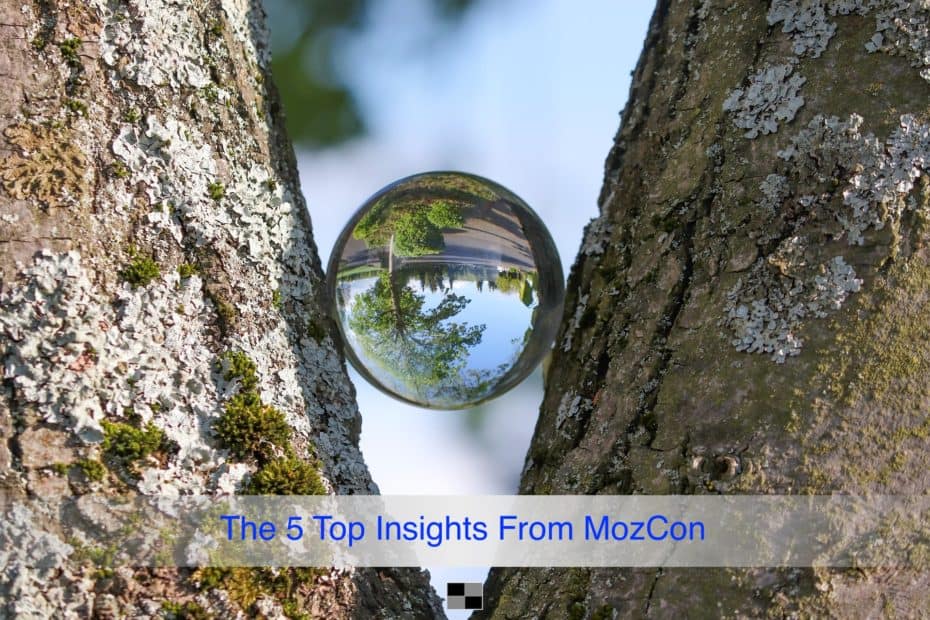
Last week I attended my first MozCon (virtually of course). For those of you who have never heard of MozCon, it is a two-day conference that is put together by Moz, a leader in search engine optimization (SEO) tools. The conference is heavy on SEO but also included topics relevant to digital marketing and public relations.
The presentations were top-notch. I saw 20 in all and I have to admit, my head is still swimming a bit in all the information that I was given. It’s going to take a little while to process it all and decide how to apply it.
I thought about giving a recap of each speaker but with 20 speakers all talking about different ideas and concepts, some being more complex than others, it felt like a tall order. Besides, Moz has recaps of Day 1 and Day 2 on their website and I’m not sure I could recap better than they have.
The only downside to writing this article is all the amazing insights that I’m leaving out and believe me, I’m leaving out a lot. I’m going to have to go back and rewatch all the presentations again after everything has settled but in the meantime, I wanted to share what I think are five of the best insights from MozCon.
What Is Thought Leadership?
The Orbit Media blog is one of my favorites. This should come as no surprise to those of you who regularly visit. I talked about it last November.
Andy Crestodina talks about content marketing in a way that nobody else does. I always walk away with lots of nuggets to contemplate and digest so I was excited to see he was speaking at MozCon.
The subject of his talk thought leadership. This is one of those terms that I see fairly frequently but few spend any time telling you what thought leadership is. Most are telling you what you need to do to be considered a thought leader. There was certainly some of that here too but I finally saw a definition that I made sense to me.
So, what is thought leadership?
Andy says, “Though leadership combines three things: a personal brand, taking a stand, and being an expert.”
I talk about the PESO model quite frequently and I can’t mention PESO without mentioning Gini Dietrich.
She has combined all three of these elements that Andy is talking about. She is CEO of Spin Sucks but she has a strong personal brand. She has taken a stand that integrated plans are much better than stand-alone plans and that an integrated plan must include paid media, earned media, shared media, and owned media. In other words, all the elements of the PESO model. Finally, she not only an expert on the PESO model, she is the expert on the PESO model.
That’s just one example.
When I think about email marketing I think Ann Handley. When I think of content marketing I think of Andy Crestodina. When I think of podcasting I think of Jay Acunzo. When I think about using SEO for marketing I think of Rand Fishkin.
Everybody I mentioned embodies these three elements of thought leadership. If you want to be a thought leader, you need to embody them too.
Do You Really Have A Competitive Advantage?
What do you think of when I say competitive advantage? Is it something your product or your company’s customer service?
After seeing Heather Physioc’s presentation, the next question I would ask you: is it really a competitive advantage or is it just a commodity?
Heather pointed out that so many of the things we do whether it be SEO or content marketing have been commoditized.
While content marketing may have been a competitive advantage in 2005 it’s far from a one in 2020. In fact, it has turned into a commodity.
Many things are commoditized. You’re a doctor? Great, as of 2019, there are 535,600 people who can say the same thing. Build software? You and 23.9 million people in the world. Not to leave me out, it’s estimated that there are 623,800 people employed in my field. With those numbers, it’s easy to argue that we are all commodities.
That’s kind of depressing but my goal isn’t to depress you (or even myself) but to point out that to have a competitive advantage you are going to need to do more than say, I’m a doctor, software developer, marketer, or whatever it is that you do.
The tendency is to point to your unique selling proposition or at a mission statement but those things aren’t necessarily a competitive advantage. Most of the time they have nothing to do with it.
Heather gives a framework you can work with to help determine if that thing you think is a competitive advantage really is.
To have a competitive advantage it needs to be:
- Unique: Something that serves a unique need, audience, or in a unique way
- Defensible: A specific claim
- Sustainable: Enduring over a long period of time
- Valuable: Something that a customer feels is a greater value than a competitor(s)
- Consistent: Something you can bring to life in every aspect of your business
If it meets all these criteria, you have a competitive advantage but beware, competitive advantages don’t last forever. They are always temporary.
When they end, you will go through this process all over again. If you don’t, you’ll just be another commodity.
Digital PR Campaigns
I do some digital public relations (PR) so this presentation by Shannon McGuirk was a particularly interesting topic for me. Her presentation focused on putting our work in context.
It started by pointing out something that I’m uncomfortable with. Probably because I find it kind of annoying when I see it.
Much of our PR is pointing out how awesome we are. It’s the patting yourself on the back comments you see:
- We just crossed $2 million in revenue!
- So proud of our team for producing such amazing results for our top client!
- Covid-19 hasn’t stopped our team. We are producing fantastic work for all of our clients!
It can be a bit much sometimes but even worse it doesn’t necessarily reflect reality.
There is a ton of pressure to meet unrealistic expectations in our campaigns so we can talk about great you are on social media, on your website, in presentations you give.
Shannon pointed out that campaigns fall into one of three areas:
- Huge wins
- Steady Performers
- Huge Fails
We love to talk about the huge wins. It’s all that bragging that I just talked about. We might talk about the steady performers on occasion but we never want to talk about our huge fails.
We have some huge wins and huge fails but in context, most of the work you do falls under steady performers. It isn’t going viral or failing, it’s just getting the job done to get results.
Not exactly what a client who wants to go viral wants to hear but the truth is that the work that is steady gets better results in the long term than those huge viral wins. The steady work is consistently hitting goals and KPI’s and it’s not just for this week. It’s for this year.
Keep things in perspective. Despite what people are saying, most of what they are doing isn’t those huge wins, it’s getting steady results. It’s true for you and it’s true for me so celebrate it.
Content Is An Asset
I started following Ross Simmonds a couple of months ago when Rand Fishkin retweeted him. He focuses on content marketing and the one big idea that he gave that really changed the way I think about content is this: Content is an asset.
Of course, he’s right but I hadn’t thought about it in that way before.
Content marketing is all about creating content and promoting it. Some of that content is focused on a specific idea or action. Sometimes content is being created just for the sake of creating content. Not a good strategy but it becomes more profound when you think of content as an asset and not this thing you are pushing out into the world just because you can.
Let’s take a step back for a moment. What is an asset anyway? From a business perspective, Investopedia defines it as: a resource with economic value that an individual, corporation, or country owns or controls with the expectation that it will provide a future benefit.
When you look at the content you have produced, how does measure up to this definition? How does the content you have in your pipeline measure up to this definition?
The point I’m making is that if content is an asset it should have value. Not only to you but to your audience as well. It’s not limited to today but also next year and two years from now. When you approach it from this perspective it really changes the idea of what content can and should be.
Don’t create content because you can. Create assets that will provide value.
Be An Architect
I will start by saying that I was familiar with Wil Reynolds’ company, Seer Interactive, but I wasn’t familiar with him at all. What immediately struck me was he is no-nonsense kind of guy. I immediately liked that about him.
Wil’s presentation covered a lot of ground so I’m going to focus on one idea that I feel really summed up everything he spoke about. Are you going to be an architect or a builder?
The builder shows up and does a job. Need to build a services page on your company? Here you go. Need to design a website? Here it is. Builders are task-oriented. You need something done and they will get it done.
The architect is interested in the bigger picture. They are interested in getting information so they can connect it to results. They will ask questions because they aren’t interested in just creating a service page, they are interested in creating the right service page for your organization that will help you meet your goals.
If you want to be an architect you need to understand your client’s goals and how they speak so you can communicate with them effectively and tie results to their needs. That client could be internal or external. It doesn’t matter. What matters is that you can get results and it starts with understanding why they want to get that result in the first place so you can take the right actions.
It’s not about building some thing. It’s about building the right thing.
Bonus: Video Content
Here you are near the end of the article and since you’ve read this far, I’m going to give you a bonus insight.
Video, video, video. We all should all be doing it. You’ve seen this, right?
Usually, the supporting evidence that I see given that we should do more video is the number of hours that people are watching Netflix. I don’t about you but that doesn’t make any sense to me. Most people are going to Netflix to be entertained. I haven’t seen a marketing, business, or educational section but I guess it could be coming any day. Yeah, probably not.
Video is another form of content like a blog post or an infographic. If you do it well, you’ll see results. If you don’t, it’s likely a waste of time and money.
The question becomes, how do you use video to get the best results? There is no shortage of opinions and that’s why I found Phil Nottingham’s presentation to be helpful. It was full of insights but one of his best was when creating content to think like a media company.
Media companies create long-form content but they also create smaller pieces of content around it to promote it and distribute it widely. Before long, you will have an ecosystem of content surrounding your long-form video content.
Long-form video content can also be much better at converting than shorter form video content. If you think about this, it makes sense. Only those who are really serious about buying from you are going to spend the time to consume longer content.
An excellent example of how to use video is this presentation by Michael King at iPullRank. I don’t delve into technical SEO very often so most this content was over my head but a topic that can be kind dry became exciting. The information was presented as part of a larger story that was taking place and it held my attention.
It’s a great example of how to use story when imparting information to people.
So that’s it. Those are my top five insights from MozCon. If you were there, tell me what you think I missed. If you weren’t there, maybe you should be next year.
*Image by Manfred Richter from Pixabay
- Is Your Marketing Connected? - March 6, 2025
- Stop Planning and Start Strategizing - October 24, 2024
- The Importance of Creating a Connection With Your Marketing - June 6, 2024

